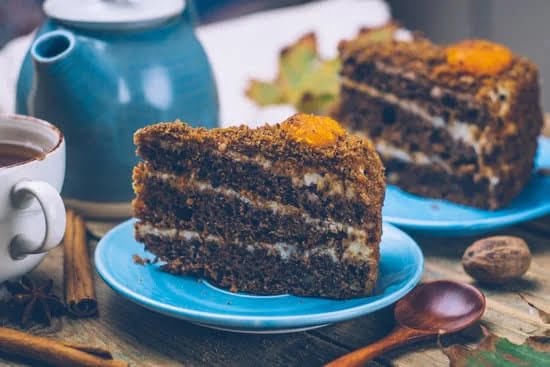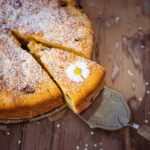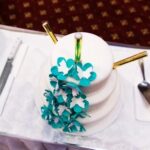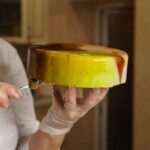Icing, the sweet and creamy layer that adorns cakes, serves a much greater purpose than just adding flavor. In the world of cake decorating, icing plays a crucial role in enhancing both the appearance and taste of these delectable treats.
Whether you’re aiming for a simple yet elegant design or an intricately detailed masterpiece, the right icing can make all the difference. This article will explore the importance of icing in cake decorating and delve into the different types of icing commonly used in this art form.
When it comes to cake decorating, icing is not just a mere afterthought; it is an integral component that can elevate any cake from ordinary to extraordinary. The texture and consistency of icing enable decorators to create smooth finishes, intricate designs, and add layers of flavor to their cakes. From birthday parties to weddings, a beautifully decorated cake with perfectly executed icing can become the centerpiece that leaves guests in awe.
Understanding the different types of icing used in cake decorating is essential for achieving desired results. Buttercream icing, royal icing, fondant, and ganache are among the most popular choices in this craft. Each type has its own unique characteristics and uses, allowing decorators to experiment with different textures, colors, and techniques. By choosing the right type of icing for specific designs, decorators can maximize their creativity while ensuring optimal results.
In this comprehensive guide to making icing for cake decorating, we will explore various types of icings and their properties. We’ll also provide essential tips on ingredient selection and share step-by-step recipes to help you create beautiful cakes that not only look stunning but taste delicious as well.
So whether you’re a novice baker or an experienced decorator looking to expand your skills repertoire, join us on this frosting-filled journey as we uncover the artistry behind making incredible icing for cake decorating.
Understanding the Different Types of Icing for Cake Decorating
When it comes to cake decorating, choosing the right type of icing is essential. Not only does the icing enhance the appearance of the cake, but it also plays a significant role in determining its taste and texture. There are several different types of icing commonly used in cake decorating, each with its own unique characteristics and uses.
One popular type of icing is buttercream icing. This creamy and versatile icing is made from a combination of butter, powdered sugar, and flavorings such as vanilla or almond extract. Buttercream icing is known for its smooth and fluffy texture, making it ideal for spreading onto cakes or piping intricate designs. It can be easily flavored and colored to suit any cake design or theme.
Another commonly used icing is royal icing. Royal icing is made from a mixture of egg whites, powdered sugar, and sometimes lemon juice. It dries hard, making it perfect for creating intricate decorations on cakes. Royal icing can be piped into delicate flowers or used to create intricate lace patterns. It can also be thinned down for flooding techniques or used as an adhesive to attach decorations to the cake.
Fondant is another type of icing that has gained popularity in recent years. Fondant is a smooth, pliable dough-like substance made from marshmallows, water, and confectioners’ sugar. It can be rolled out like dough and draped over cakes for a flawless finish. Fondant provides a sleek and polished look to cakes and allows for sculpting detailed designs such as bows or figures.
Lastly, ganache is a rich chocolate-based icing made from chocolate and heavy cream. Ganache has a glossy finish and can be used in various ways in cake decorating. It can be poured over cakes for a decadent drip effect or whipped into truffles for elegant decorations. Ganache can also be used as a filling between layers or spread onto cupcakes for an indulgent finish.
When choosing the right type of icing for your cake design, consider the desired texture, flavor, and appearance. Each type of icing has its own unique characteristics that can enhance or limit the possibilities for decorating.
It is also important to keep in mind factors such as temperature and humidity which can affect the stability and durability of certain icing types. Experimentation and practice will help you develop a better understanding of each type of icing and how it can be used to achieve your desired cake decorating results.
Essential Ingredients for Making Icing
When it comes to making icing for cake decorating, there are a few essential ingredients that every baker should have on hand. These ingredients not only contribute to the flavor of the icing but also play a crucial role in its texture and stability. Understanding the purpose of these ingredients will help you create delicious and visually appealing icings for your cakes.
- Butter: One of the common main ingredients in many icings is butter. It adds richness and creaminess to the icing while also providing structure and stability. Unsalted butter is often preferred as it allows for better control of the overall taste, especially if you plan to add other flavorings to your icing.
- Powdered Sugar: Also known as confectioners’ sugar or icing sugar, powdered sugar is an essential ingredient in most icings. The fine texture of powdered sugar helps create a smooth consistency in the icing without any grains or lumps. It also sweetens the icing while contributing to its stability.
- Flavorings: Depending on personal preference, various flavorings can be added to enhance the taste of the icing. Vanilla extract is a classic choice that complements many cake flavors, but other options like almond extract, citrus zest, or even liqueurs can be used to add unique flavors.
- Liquids: Liquids such as milk, cream, or water are often added to achieve the desired consistency in icings. These liquids can make the icing smoother and easier to spread or pipe onto cakes. Additionally, they can help thin out thick icings or provide moisture for certain types of icings like royal icing.
- Food Coloring: While food coloring is not an essential ingredient for making all types of icings, it plays a significant role in achieving vibrant and eye-catching designs when desired. Gel-based food coloring is often recommended as it does not alter the consistency of the icing and provides vibrant colors with just a small amount.
Remember that different types of icings may require additional or specific ingredients, which will be discussed in their respective sections of this article. It is important to have these essential ingredients on hand as they are the building blocks for creating delicious and visually appealing icings that will take your cake decorating to the next level.
Traditional Buttercream Icing Recipe
Ingredients for Traditional Buttercream Icing
Before diving into the recipe, it’s important to gather all the necessary ingredients for making traditional buttercream icing. The basic ingredients needed are:
- Butter: Unsalted butter is preferred for a smooth and creamy texture. Make sure to use softened butter at room temperature for easier mixing.
- Powdered Sugar: Also known as confectioners’ sugar or icing sugar, powdered sugar adds sweetness and helps thicken the icing.
- Vanilla Extract: Adding a dash of vanilla extract enhances the flavor of the buttercream icing. Clear vanilla extract can be used instead if you want to maintain a pure white color.
Step-by-Step Instructions
Making traditional buttercream icing involves a few simple steps that can be easily followed:
- Beat the Butter: Start by beating the softened butter in a mixing bowl using an electric mixer on medium speed until it becomes smooth and creamy.
- Gradually Add Powdered Sugar: Slowly add powdered sugar, about 1 cup at a time, while continuing to beat on low speed. This will prevent lumps from forming.
- Incorporate Vanilla Extract: Once all the powdered sugar is added, pour in the vanilla extract and continue beating until fully combined.
- Adjust Consistency: If the mixture seems too thick, you can add a tablespoon of milk or cream at a time until your desired consistency is achieved. On the other hand, if it appears too runny, gradually add more powdered sugar until it thickens up.
- Mix Until Fluffy: Increase the speed of your mixer to medium-high and continue beating for an additional 2-3 minutes to make the buttercream light and fluffy.
- Ready to Use: Your traditional buttercream icing is now ready to be used for decorating cakes. It can be spread onto cakes with a spatula, piped through a pastry bag, or used for creating various designs and textures.
Tips for Achieving a Smooth and Fluffy Consistency
- Using softened butter is crucial for achieving a smooth and fluffy texture. Taking the butter out of the refrigerator at least an hour before starting the recipe will ensure it is properly softened.
- Sifting the powdered sugar before adding it to the butter can help eliminate any lumps and ensure a smoother consistency.
- Beating the icing for an adequate amount of time is essential. This will not only incorporate air into the mixture but also ensure that all ingredients are well blended.
- If air bubbles appear in your icing after you have finished making it, gently tap the bowl on a flat surface to release them. Alternatively, you can leave it to rest for a few minutes before using.
- Store any leftover buttercream icing in an airtight container at room temperature for up to 2-3 days or refrigerate it for longer storage. Before using refrigerated icing, allow it to come back to room temperature and give it a quick re-beat to restore its soft consistency.
By following this traditional buttercream icing recipe and applying these tips, you’ll be able to create delectable creations with a smooth and fluffy finish that will delight both your eyes and taste buds.
Perfecting Royal Icing for Intricate Cake Designs
Royal icing is a versatile and durable type of icing that is perfect for creating intricate decorations on cakes. Its smooth texture and ability to harden make it ideal for piping detailed designs, such as flowers, borders, and lettering. In this section, we will explore the characteristics of royal icing, share a recipe using egg whites, powdered sugar, and lemon juice, and provide tips on achieving the ideal consistency.
Royal icing is made from a mixture of egg whites or meringue powder, powdered sugar, and lemon juice or water. The egg whites act as a binder and help the icing harden once it dries. The powdered sugar provides sweetness and structure to the icing. Lemon juice or water is added as a liquid component to adjust the consistency of the icing.
To make royal icing, start by beating the egg whites until frothy. Gradually add in the powdered sugar while continuing to beat until stiff peaks form. Then, add in the lemon juice or water gradually until you achieve your desired consistency. If you want a thicker consistency for piping intricate details, use less liquid. If you want a thinner consistency for covering larger areas, such as flooding cookies or cakes, add more liquid.
One important tip when working with royal icing is to cover it tightly with plastic wrap when not in use to prevent it from drying out. Royal icing can dry quickly once exposed to air. When using royal icing for piping decorations, it’s important to work quickly and keep a damp cloth nearby to wipe off any excess that may clog your piping tip.
| Ingredients | Amount |
|---|---|
| Egg whites or meringue powder | 3 tablespoons |
| Powdered sugar | 4 cups |
| Lemon juice or water | 1 tablespoon |
By following this recipe and experimenting with different consistencies, you can perfect your royal icing for creating intricate cake designs. With practice and patience, you can achieve professional-looking decorations that will impress your friends and family.
Working with Fondant
Fondant is a popular choice for cake covering and sculpting due to its smooth and pliable consistency. Working with fondant can be both exciting and challenging, but with the right tips and tricks, you can achieve professional-looking designs. Here are some essential tips for working with fondant:
- Choose the Right Fondant: There are two main types of fondant available – commercially prepared fondant and homemade marshmallow fondant. Commercial fondant is convenient and readily available, while homemade marshmallow fondant allows for more customization. Consider your specific needs and preferences when choosing the type of fondant to work with.
- Prepare Your Work Surface: Before rolling out the fondant, make sure to prepare your work surface properly. Dusting it lightly with powdered sugar or cornstarch will prevent the fondant from sticking. You can also use shortening for greasing if desired.
- Knead the Fondant: Kneading the fondant helps to warm it up and make it more malleable. Start by kneading a small portion at a time until it becomes smooth and pliable. If you encounter any cracks or dry spots, add a little bit of vegetable shortening or edible glycerin to moisten the fondant.
- Roll Out Evenly: When rolling out the fondant, aim for an even thickness throughout so that it covers your cake uniformly. Use rolling guides or dowel rods on either side of your dough as a reference for achieving the desired thickness.
- Apply Fondant Smoothly: To apply the rolled-out fondant onto your cake, start by gently draping it over the top of the cake, making sure to avoid creases or air bubbles. Gradually smooth down the sides of the cake while using a smoother tool to achieve a flawless finish.
- Fixing Imperfections: If you notice any tears, cracks, or imperfections in the fondant, you can easily fix them by gently smoothing or pressing the fondant together. A small amount of water or edible glue can help to adhere the pieces together seamlessly.
By following these tips and tricks, you can work confidently with fondant and create beautifully decorated cakes. Remember to practice and experiment to discover your own unique styles and techniques with this versatile icing choice.
Getting Creative with Ganache Icing
Ganache icing is a versatile and decadent option for cake decorating that can elevate any cake design. Its glossy appearance and rich chocolate flavor make it a popular choice among bakers and cake decorators. In this section, we will explore the different aspects of working with ganache icing, including its recipe, uses, and techniques.
Ganache Recipe
To make ganache icing, you will need high-quality chocolate and heavy cream. The ratio of chocolate to cream will depend on the consistency desired. For a thicker ganache suitable for spreading or piping decorations, use equal parts chocolate and cream. For a thinner consistency perfect for drips or glazes, increase the amount of cream slightly.
Start by chopping the chocolate into small pieces and placing it in a heatproof bowl. In a small saucepan, heat the cream until it starts to simmer gently. Pour the hot cream over the chopped chocolate and let it sit for a minute before stirring. Gently stir the mixture until the chocolate has melted completely and the ganache is smooth and shiny.
Uses of Ganache
Ganache can be used in various ways when decorating cakes. One popular technique is to pour ganache over a cake to create a smooth, glossy finish. This works particularly well on round or square cakes with even edges. You can also use ganache to create decorative drips that flow down the sides of the cake, giving it an elegant and modern look.
In addition to covering cakes, ganache can be used as a filling between layers or piped into truffles for added indulgence. Ganache can also serve as an excellent base for sculpting three-dimensional figurines or creating other intricate decorations on top of your cakes.
Exploring Creativity with Ganache
While traditional dark chocolate ganache is widely loved, there are endless opportunities for creativity with this icing. You can experiment with different types of chocolate, such as white, milk, or flavored varieties, to create unique and customized ganache that complements your cake design.
To add an extra touch of flavor and dimension to your ganache, you can incorporate extracts like vanilla, mint, or almond. Additionally, mixing in other ingredients such as crushed nuts, dried fruits, or spices can give your ganache a delightful twist.
Troubleshooting Common Icing Issues
Even the most experienced cake decorators encounter issues when making icing. Graininess, air bubbles, and color fading are just a few of the common challenges that can arise. However, with the right knowledge and techniques, these issues can be addressed and overcome. Here are some troubleshooting tips to help you salvage and improve the consistency of your icing:
Graininess
If your icing has a grainy texture, it is likely due to undissolved sugar or cocoa powder. To fix this issue, reheat the icing gently in a double boiler or microwave until it is warm but not hot. Stir it continuously until the grains dissolve. If using cocoa powder, sift it before adding to avoid any lumps.
Air Bubbles
Air bubbles can occur when mixing your icing too vigorously or using an electric mixer at high speed. To eliminate air bubbles, gently tap the bowl on a countertop to release them or use a toothpick to pop them individually.
Color Fading
If you find that the color of your icing fades over time, it may be due to exposure to light or excessive heat. To prevent this issue, store your decorated cakes in a cool, shaded area away from direct sunlight. You can also add a small amount of lemon juice or cream of tartar to help stabilize the color.
| Issue | Troubleshooting Tip |
|---|---|
| Graininess | Reheat gently and stir until grain dissolves |
| Air Bubbles | Tap the bowl or use a toothpick to release air bubbles |
| Color Fading | Store the cake in a cool area away from direct sunlight and add lemon juice/cream of tartar |
Advanced Techniques in Icing for Cake Decorating
Cake decorating is not just about applying a simple layer of icing; it is an art form that allows for creativity and expression. Advanced techniques in icing can take your cake designs to the next level, making them truly standout creations. In this section, we will delve into some advanced techniques that can elevate your cake decorating skills and help you create professional-looking designs.
One popular advanced technique is piping, which involves using a pastry bag and different tips to create decorative patterns and textures on the cake’s surface. Piping can be used to make intricate borders, floral designs, or even personalized messages. It requires practice and precision to achieve clean lines and consistent shapes. Experimenting with different tip styles and sizes will allow you to create various effects, from delicate lace designs to bold swirls.
Another advanced technique worth exploring is stencil work. Stenciling allows you to transfer intricate patterns onto the cake by placing a stencil over the surface and using icing or powdered sugar to fill in the design. This technique is especially useful for creating detailed motifs or adding texture to large areas of the cake. You can find pre-made stencils in various designs or even create your own custom stencils for more personalized creations.
Brush embroidery is another advanced technique that adds elegance and texture to cakes. It involves using a small brush dipped in food coloring or thinned icing to create delicate brush strokes resembling embroidered fabric. The result is a beautiful soft effect that works well for creating floral or lace designs on wedding cakes or other special occasions.
When practicing advanced techniques in icing for cake decorating, it’s important to remember that patience and persistence are key. These techniques require time and practice before achieving satisfactory results. Start with simpler designs and gradually work your way up as you gain confidence and skill.
Conclusion
In conclusion, mastering the art of making icing for cake decorating is a journey that requires practice, experimentation, and creativity. Throughout this article, we have explored the different types of icing commonly used in cake decorating, including buttercream icing, royal icing, fondant, and ganache. We have also discussed the essential ingredients needed for making these icings and provided step-by-step instructions for some classic recipes.
It is important to remember that no matter how detailed the instructions or precise the measurements, there will always be room for personal style and technique in cake decorating. Each baker brings their own creativity and artistic touch to their creations. So while the techniques discussed in this article are a great starting point, it is encouraged to explore your own unique styles as well.
As you embark on your journey to master the art of making icing for cake decorating, don’t be discouraged by any mistakes or challenges you may encounter along the way. Graininess, air bubbles, and color fading are common issues that can be overcome with practice and troubleshooting techniques. Don’t be afraid to experiment with different flavors and textures to create truly unique and delicious cakes.
Frequently Asked Questions
What is the best icing to use for cake decorating?
The best icing to use for cake decorating depends on the desired final result and personal preference. Buttercream icing is a popular choice due to its versatility and ability to hold shape well. It is made by creaming together butter, powdered sugar, and flavorings like vanilla extract. Buttercream can be easily colored and piped to create intricate designs on cakes.
Fondant is another commonly used icing that provides a smooth, elegant finish. It is made from a mixture of marshmallows, water, and powdered sugar that is rolled out and draped over the cake. Fondant allows for more precise sculpting and can be easily molded into various shapes.
How to make a cake frosting at home?
Making cake frosting at home can be a fun and rewarding process. A classic recipe for homemade buttercream frosting involves beating softened unsalted butter until creamy, then gradually adding powdered sugar while continuing to beat until smooth. Flavorings such as vanilla extract or cocoa powder can be added based on personal preference.
To achieve the desired consistency, milk or heavy cream can be incorporated gradually until the frosting reaches the desired thickness for spreading or piping onto cakes. It’s important to taste the frosting during the process and adjust ingredients as needed.
What frosting do professionals use?
Professionals often use a variety of frostings depending on the specific application or design they are aiming for. Swiss meringue buttercream is a favored choice among professionals due to its smooth texture and stability in warmer conditions compared to American buttercream.
It is made by heating egg whites and sugar over a double boiler while whisking until it reaches a certain temperature; then it is transferred to a mixer where softened unsalted butter is added piece by piece until fully incorporated into a creamy frosting. Swiss meringue buttercream has a light, silky consistency that pipes beautifully onto cakes with clean edges and offers great versatility for decorative techniques such as smoothing with an offset spatula or creating intricate patterns with piping bags and tips.

Welcome to our cake decorating blog! My name is Destiny Flores, and I am the proud owner of a cake decorating business named Cake Karma. Our mission is to provide delicious, beautiful cakes for all occasions. We specialize in creating custom cakes that are tailored specifically to each customer’s individual needs and tastes.





